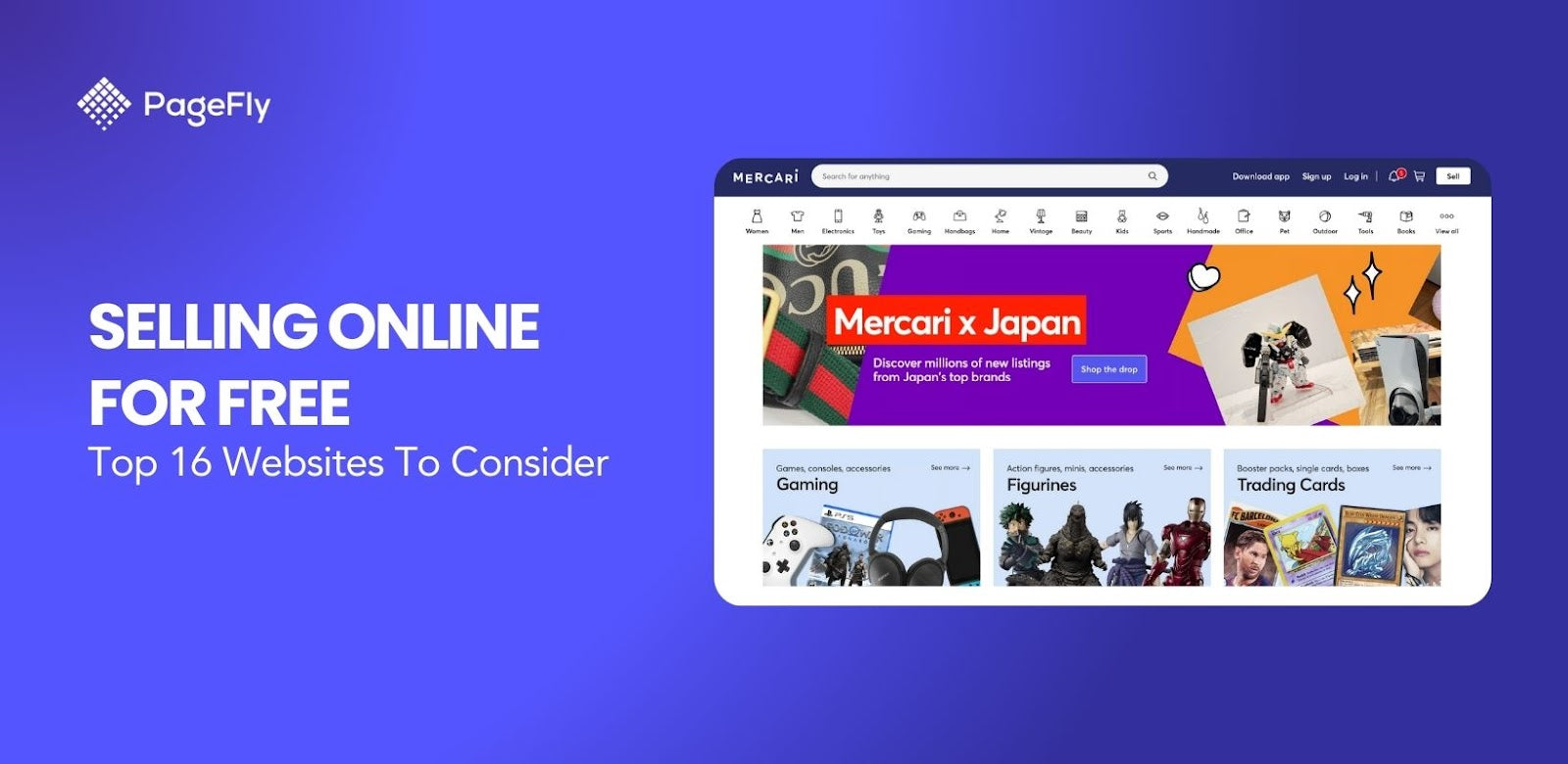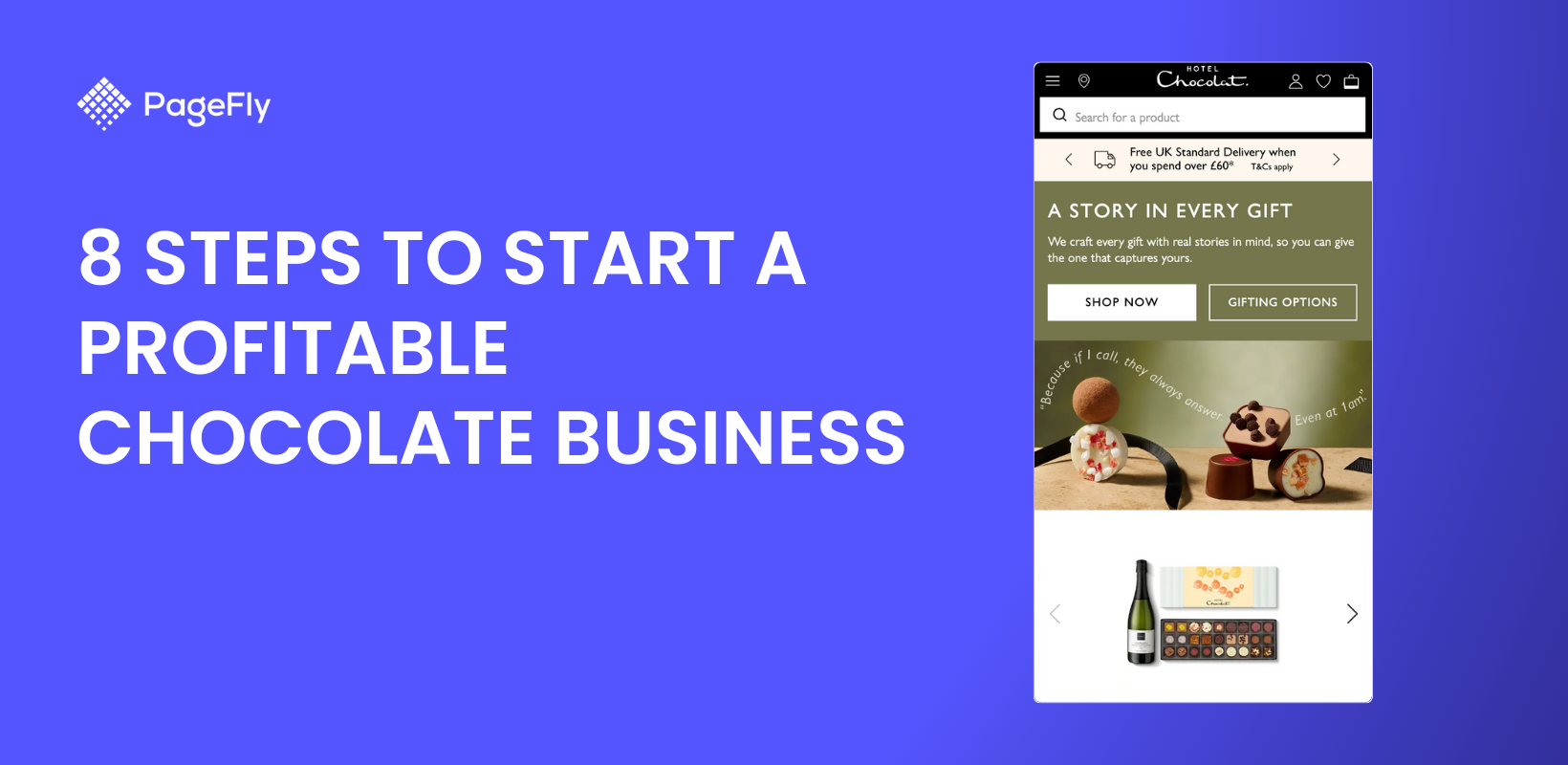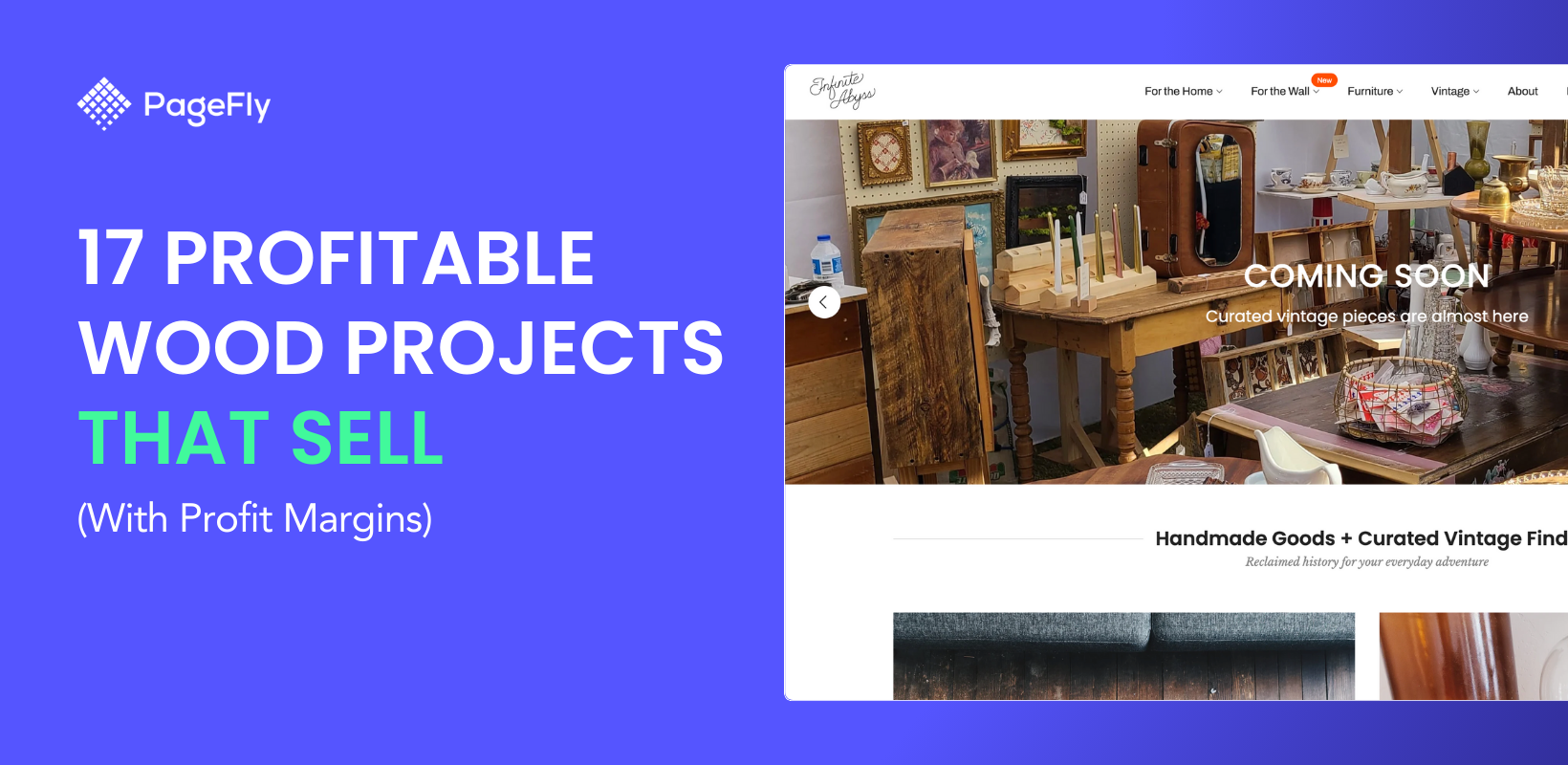In 2020, smack in the middle of lockdown, Tristan Thomas ended his marketing job at Monzo to focus on getting his own wine subscription startup, Winepost, off the ground.
Winepost curates high quality wines delivered to its customers on a regular basis. And if ZoomInfo is to be believed, the company makes between $1-$5 million dollars yearly.
Not bad for a company that’s barely 3 years old, right?.
But you see, Winepost is just one example of brands that found success through selling wine online. Numerous stats prove that this niche is a lucrative one to get into.
In the US alone, online wine sales grew from 0.3% in 2018 to 3% in 2022. This increase points to the growing interest in Direct-To-Consumer (DTC) wine sales. And it is why numerous wine buyers, analysts and entrepreneurs are excited about the prospects of selling wine online.
Jeff Quackenbush of the North Bay Business Journal even proclaimed:
“eCommerce will be the number one driver of beverage alcohol industry growth over the next decade."
So, if you are looking to start a wine business, building your brand online is the way to go.
Here’s what you need to know, starting from the legal implications.

Source: Pexels
Outline
- Legal considerations for selling wine online
- Choose a platform to sell your wine online
- Must-have features to look out for in your eCommerce website platform
- Choosing a shipping partner to complement your online wine sales
- How Winepost uses Shopify to build its wine business
- Conclusion: build an online wine store with Shopify
Legal considerations for selling wine online
Selling wine online comes with a variety of legal considerations. These considerations, however, depend on the state and country you plan to sell your products.
So, let’s say you are a US-based online wine business?. What legal requirements do you need to worry about?
Note that the information below should not be taken as legal advice. You should consult your lawyer if you plan to launch an eCommerce wine business in the US.
Find out what states allow you to buy and sell wine online
Thanks to the 21st Amendment, every US state has the power to write its own laws concerning alcohol distribution within its borders. This means that if you are shipping across states, you must follow shipping laws for both the shipping and receiving states.
44 states including Idaho, Colorado, and Arizona permit out-of-state wineries to offer direct shipping to consumers. Louisiana, Ohio, and New Jersey permit limited winery direct shipping. But states like Mississippi and Alabama flat out prohibits out-of-state wineries from offering direct shipping to consumers.
Also, some states limit the amount of wine that can be shipped to a consumer within a time frame.
For instance, in Arkansas, consumers must visit the winery in person to have wine shipped to their home as retail shipping is prohibited. Only one case (9 liters or 2.5 gallons) is permitted to be purchased per calendar year.

Source: Wine Spectator
Obtain proper licenses and permits for shipping overseas
As you can imagine, countries around the world have unique laws and regulations regarding the import and sale of alcohol. You must do your research to avoid the loss of your products at customs.
But typically, you’ll be required to provide the following documents to get your bottles in another country:
- Importer’s license/permit
- Wine “quality certificate”
- Ingredient analysis and manufacturing process list

Tax obligations for selling wine in the US
The tax you are required by law to pay on your wine products depends on the state you are selling them in. If you plan to sell wine online legally in the US, look up tax laws for relevant states to know what rates you’ll pay for tax.
We’ll look at the state of Louisiana as a case study.
Wines shipped into the state of Louisiana are taxed at:
- Sparkling Wine: $0.55 per liter
- Still wines with over 14% alcohol content and up to 24% alcohol content: $0.35 per liter
- Still wines with 14% and under alcohol content: $0.20 per liter
Choose a platform to sell your wine online
After you make sure that you’re up to speed with all that’s required to legally sell wine online, it’s time to choose a platform to start selling on.
There are two options to choose from.
The first is to use online wine marketplaces like Vivino and Cellarstash.
These wine ecommerce platforms connect millions of wine drinkers from around the world with wineries and wine retailers. Vivino, for instance, claims to have onboarded almost 250,000 wineries and is used by over 60 million wine drinkers worldwide.

Source: Vivino
A big advantage of selling through wine marketplaces is that they handle delivery of your wine to customers. Wine shipping and logistics is very tricky so it is nice to have this responsibility off your plate.
Marketplaces also have ready-to-purchase customers so you don’t have to go looking for them.
On the other hand, a drawback of using marketplaces is that they do not give you plenty options when it comes to curating a memorable buying experience for your customers. These platforms control every customer interaction so you have your hands tied when it comes to shaping the narrative about your brand.
A distinctive brand experience is key to growing your online sales. That’s where the second option really stands out.
You can also use an online website builder like Shopify to build your online wine store. This does not only help you reach customers directly, you also have the power to control how the customer interacts with your brand.

Source: Pexels
Shopify is a premier website builder that provides a range of features necessary to create and manage an online store.
We’ll look at some of those features below.
Must-have features to look out for in your eCommerce website platform
We believe that Shopify is the best eCommerce website builder because we have extensively tested the platform. But if you want to keep your options open and research alternatives yourself, these must-have features should guide your choice:
- Flexible website builder
- Inventory and order management
- Secure checkout
- Robust business analytics
- Diverse marketing tools.
Flexible website builder
A flexible website builder helps you create an online store that can withstand an increasing number of users, website traffic, and data.
As your business grows, it is expected that organic traffic to Shopify store’s increases too.If your website is built on a platform that can’t handle this growth, you will experience slow loading time and frequent crashing, which in turn will lead to bad customer experience and revenue loss.

A flexible website builder will also provide you with:
- Responsive designs on smartphones and computers. A responsive website design performs well on a variety of devices and screen types. This leads to a better customer experience, and ultimately, more sales.
- Custom domain names. These are important for brand building and SEO.
- Integration with third-party services. Shopify also stands out here. The platform has an app store with over 2400 apps which allows you to integrate with almost any tool you need to run your business.
- Website security features.
Shopify is known for its flexibility and scalability. That is why it is used by over a million merchants globally.
Inventory and order management
Your website builder of choice should also support real time inventory and order management. You need a software platform that automatically updates inventory levels and alerts you when your wine collection runs low. Shopify eCommerce platform itself support integrated Shopify inventory management effectively.
Not only that, the right platform should make it easy for you to manage your product pricing, product listings, and product descriptions.

Source: Pexels
Secure checkout
Checkout is a critical part of the online buyer’s journey. Your marketing efforts will be all for nothing if you can’t provide a seamless checkout experience for your customers – 26% of customers will abandon a checkout process that they think is too long or complicated.
eCommerce platforms like Shopify typically use API integrations with payment processors like Stripe and PayPal to power their checkout.
So make sure your eCommerce platform supports integrations with reputable payment processors. The following factors should guide you when choosing a payment processor:.
- Checkout fees: compare the checkout fees charged by different payment processors to make sure that you’re getting the best deal.
- Integrations: choose a payment processor that offers a seamless integration with your website system. It is easier to manage your transactions if your processor plays well with your CRM, your shopping cart, and your accounting software.
- Payment methods: consider what payment methods you want to accept and choose a payment processor that supports them.
Robust business analytics
Analytics let you know how well your business is performing. Your ideal platform’s analytics will show you how many people visit your site, how much money you’re making, what your conversion rate is, and so on.
Watch out for the following analytics features when choosing an eCommerce website builder:
- Inventory data: your eCommerce solution should help you monitor stock levels and send low stock alerts for effective inventory management.
- Website analytics: you should have access to KPIs like bounce rate, number of unique visitors, website traffic. These numbers show you how customers interact with your website.
- Customer data: your eCommerce solution should also provide demographic information on your customers, like their location. Access to this sort of information makes this easier to serve a great customer experience and create effective ads.
- Sales data: you also need a platform that provides information such as revenue, average order value, number of orders, and so on.
Diverse marketing tools
Of course, you’re in charge of your brand’s marketing if you decide to opt for an eCommerce website builder instead of a wine marketplace.
That’s why it is important to choose a platform that supports marketing on different channels. Your preferred platform should offer the following tools.
- Email marketing: email remains an effective marketing channel for eCommerce. You need a tool that makes it easy to send newsletters to your customers.
- Social media marketing: your platform should make it easy for you to post content and serve ads on platforms like Facebook, Pinterest, and TikTok.
- Influencer marketing: it should also be easy to partner with wine influencers and drive traffic to your store.
- Customer loyalty programs: your platform should also support customer loyalty programs. These programs allow you to offer incentives and rewards to your customers to encourage return purchases.
Make in depth product fulfillment plans before you start getting orders.
Choosing a shipping partner to complement your online wine sales
Shipping wines to customers is a complex process. The nature of wine bottles means that you have to think deeply about your packaging, in addition to tracking orders and managing shipping options.

Source: Packaging Europe
Proper packaging does not just offer you product protection. Your wine package is also a brand building opportunity, you should create a memorable unboxing experience for your customers with it.
When it comes to shipping, not all courier services deliver alcohol.
USPS, for instance, doesn’t. And FedEx requires businesses to sign an alcohol shipping agreement in order to ship alcohol via its network.
Other couriers that will ship wine include UPS and DHL; like FedEx, they only work with wine collectors and businesses with required documents and agreement.
There are also dedicated wine logistics companies in the wine industry that handle delivery for licensed wine retailers. They include Wine Care Group and Wineshipping.
How Winepost uses Shopify to build its wine business
You were introduced to Winepost at the beginning of this article. How does this wine brand use Shopify to sell its products?
Let’s see how Winepost sells its products first.

Source: Winepost
Customers that use the service first specify how many bottles of wine they want to receive, how often they’d like to receive them, and what their wine preferences are. This preliminary information is needed to curate the first delivery batch.
When the customers receive the wine bottles, they rate each one, telling Winepost what they like and what they don’t. These ratings are used to build their wine taste profile which informs the next delivery batch. The wine taste profile improves after every delivery as Winepost gets more information about the customers’ taste.
Now, how does Shopify come into play?
Apart from the fact that Winepost is built on Shopify, the brand also uses Shopify Boost theme to define its website’s layout. Winepost also took advantage of Shopify’s rich app store to find store management tools.
Some of these tools include:
- Hulk Apps for age verification–important if you are in the wine business.
- Klaviyo for email marketing.
- Bootstrap Heroes for offers and reminders, and many more.
Conclusion: build an online wine store with Shopify
Wine business is undoubtedly a lucrative opportunity for merchants who are willing to produce (or source) high-quality products and build an efficient wine selling process. But it is important that you do your own research before you build a wine club.
Ask yourself:
- What eCommerce platform am I going to use?
- Where will I get my wines from?
- What licenses do I need?
- Who is my target audience?
- How will I reach them?









![14 Profitable Small Food Business Ideas for 2025 [Real Numbers]](http://pagefly.io/cdn/shop/articles/1_58b587d2-13db-4aa6-8c19-e40f5c88d3eb.jpg?v=1758255771&width=4460)
![Art Business Names: 350+ Ideas + Free Generator [2025 Updated]](http://pagefly.io/cdn/shop/articles/art_business_name_e94a54e9-d325-4ba3-94ab-7b4297952312.png?v=1760062968&width=1640)







